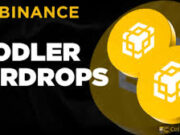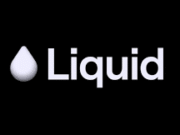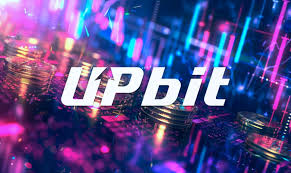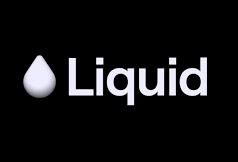A Major Exchange Moves: What’s Going On?
In a noteworthy development, the South Korean crypto exchange Upbit has announced the forthcoming listing of the cryptocurrency TRUST (ticker: TRUST) with trading pairs in KRW (Korean Won), BTC (Bitcoin) and USDT (Tether). According to the official announcement, deposits for TRUST will open first, and trading will follow once certain criteria—including sufficient liquidity—are met.
This listing means that TRUST will be made available on a major platform, increasing its accessibility, liquidity and exposure. For those following crypto developments, this is one of those milestones.
Why This Listing Makes a Distinctive Impact
First off, let’s appreciate what Upbit represents. Launched in 2017 and operated by Dunamu, Upbit is one of South Korea’s leading exchanges—with considerable global relevance. (Wikipedia)
Because of that standing:
- When Upbit lists a token, it tends to elevate the token’s visibility in South Korea and abroad.
- It signals a vote of confidence (or at least sufficient vetting) by a respected exchange.
- It opens new corridors of liquidity—especially via fiat-to-token (KRW) trades, which matter in local markets.
- For TRUST specifically, being listed in KRW, BTC and USDT pairs means multiple ways for traders to access the asset.
Secondly, TRUST describes itself as a “decentralised information finance network.” Although public information remains limited, the gist is that TRUST aims to support financial information flows in a decentralised way—bringing together elements of Web3, data, finance, and token-driven networks. (Note: we could not locate a fully detailed whitepaper in the available sources.) On CoinGecko, TRUST tracks under “TRUST” with live price and market cap data. (CoinGecko)
So, combining the above: Upbit’s listing provides a base of legitimacy, access and potential user-footprint; while TRUST itself is positioning in a thematic area (information + finance + decentralisation) that’s generating interest.
How the Listing Process Works on Upbit
Although each listing is different, here are typical steps and features, as reflected in Upbit’s publicly known listing protocol:
- Announcement of Trading Support – Upbit publishes a “Trading Support Notice” stating the token, the trading pairs (KRW, BTC, USDT), deposit/withdrawal opening times, and when trading will begin.
- Deposit/Withdrawal Activation – Prior to trading, users are usually allowed to deposit the token (via specified networks). Withdrawals may follow or be simultaneous.
- Trading Opens – At the set time (often with buy orders disabled for a short period, or certain limitations) trading in the new pair(s) begins. For example, Upbit might disable buys for a brief window to stabilise order books. (Bitcoin Sistemi)
- Liquidity & Monitoring – Upbit emphasises that if sufficient liquidity is not present, trading may be delayed or limited for stability. (Bitcoin Sistemi)
- Post-Listing Conditions – After listing, market behavior (volume, spread, fairness) is often monitored. Tokens may receive greater scrutiny in terms of ongoing support.
For TRUST the announcement specifically says that it will be available for trading on these pairs, and users should watch the official Upbit notice for precise times and networks. (As of this writing, no exact trading-start timestamp is publicly quoted in the sources I found.)
The Significance for TRUST and Its Community
What does this listing mean — let’s go deeper:
- Increased Exposure & Access: By being listed on Upbit, TRUST becomes available to a large Korean audience (and international users via Upbit’s infrastructure) using KRW, BTC and USDT. That means more access, more potential users and more liquidity.
- Liquidity & Market Depth: More trading pairs often translate to better liquidity, tighter spreads and improved market efficiency. That helps both buyers and sellers engage with less slippage.
- Credibility Boost: Listing by a major exchange often serves as a kind of third-party verification (though not a guarantee). It may encourage additional interest from traders, partners or media.
- Potential Price Reaction: Historically, tokens listed on major exchanges often experience price upticks (and increased volatility) in the immediate aftermath. That said, each market is different.
- Gateway to Local Fiat: The KRW trading pair is key especially for users in South Korea. Often fiat pairs provide a simpler on-ramp/off-ramp compared to crypto-only pairs.
- Strategic Shift for TRUST: For the project behind TRUST, this listing could serve as a foundation for broader adoption, partnerships, and ecosystem growth.
Important Considerations & Risks to Keep in Mind
As exciting as listings are, here are some cautionary pointers:
- Volatility Can Be High: New listings tend to have rapid price moves—both upward and downward. It’s not uncommon to see big swings in the first hours or days.
- Liquidity May Be Uneven: Even though a token is listed, initial depth and order-book quality may be light. That can lead to higher slippage or mis-pricing.
- Project Fundamentals Matter: A listing doesn’t replace project due-diligence. The token’s utility, adoption, tokenomics, governance, roadmap and team all still count.
- Regulatory & Compliance Risks: Exchanges like Upbit are subject to regulations in their jurisdiction (South Korea). Users should ensure they understand deposit/withdrawal rules, network compatibility, fees and local laws.
- Network & Deposit/Withdrawal Details: It’s vital to double-check networks (e.g., ERC-20 vs other chains), contract addresses, deposit limits and any special instructions from Upbit. Mistakes here can lead to loss of funds. (See Upbit’s past listing notices.) (Bitcoin Sistemi)
Hence, while the listing is a positive milestone, users should remain cautious and well-informed.
Broader Context: The Crypto Market & Exchange Listings
This listing of TRUST occurs in a broader context of exchange listings and token adoption. Some additional points:
- Upbit’s listing criteria: Upbit has a reputation for being selective, and its listing process involves vetting. (Scribd)
- The effects of liquidity & trading volume: Studies show that listings on major exchanges can trigger noticeable volume and price movements. For example, when Upbit listed other tokens recently, volume and market interest jumped. (BeInCrypto)
- The decentralised finance (DeFi) & information-finance layer: The space in which TRUST claims to operate (information finance + decentralisation) is gaining more attention as crypto users seek richer use-cases beyond pure value tokens.
- Regional markets matter: South Korea is a sophisticated crypto market; exposure via KRW pairs often signals that projects are targeting real-world users in East Asia, not just global crypto-only markets.
What to Watch Next for TRUST
Since the listing is now official, there are a number of milestones and signals to monitor:
- Trading Start Time: The exact timestamp when trading goes live on the TRUST/KRW, TRUST/BTC, and TRUST/USDT pairs. Upbit will publish the notice.
- Deposit/Withdrawal Opening: Ensure you’re ready (with correct network, wallet address, token contract) when deposits open—usually ahead of trading.
- First Order Book Behaviour: Monitor how the order book fills, what the spread is, and how many buyers vs sellers show up.
- Volume & Price Action: Watch for whether volume is sustained. A spike is good—but what matters is whether it holds.
- Community & Ecosystem Activity: See if TRUST’s project team announces partnerships, integrations, or ecosystem updates, which often follow a listing.
- Regulatory Updates: Especially in South Korea and other major jurisdictions, regulatory moves can impact trading conditions, withdrawals or listing status.
- Post-Listing Support: Look for whether Upbit supports ongoing marketing, liquidity initiatives or regular listing maintenance for TRUST.
All of these will provide signals about how meaningful this listing will be for TRUST’s long-term trajectory.
Summary: Big Step, But Not the Finish Line
In short: Upbit’s announcement to list TRUST with KRW, BTC and USDT pairs is a meaningful event. It raises the project’s profile, offers broader access, and potentially opens new pathways for liquidity and adoption. That said, the listing is a step — but not the entire journey.
For TRUST, what comes after the listing—how the community engages, how the token is used, how the ecosystem develops—will determine how transformative this move ultimately is. For users and investors, it offers an opportunity — but one best approached thoughtfully.
Closing
If you’re interested in TRUST (whether as a user, investor or participant in the ecosystem), this listing on a major platform like Upbit is a strong signal. It suggests the project has passed certain gates and is preparing for broader exposure. Meanwhile, the pairing structure (KRW, BTC, USDT) ensures flexibility for different types of traders.
As always, make sure you’re informed: check the listing notice on Upbit, verify token contract details, understand the network instructions, and keep tabs on ecosystem updates from TRUST’s team. Because while listings offer opportunity, they also come with the usual crypto-market caveats.
Stay tuned for the official trading start time, watch the volume and order-book behaviour, and see how the market responds. If the listing generates strong, sustained interest, this could mark an important moment in TRUST’s journey.
Sources:
- Upbit exchange stats & background. (CoinGecko)
- Upbit listing mechanics (via news). (Bitcoin Sistemi)
- TRUST token data (live price etc). (CoinGecko)



























